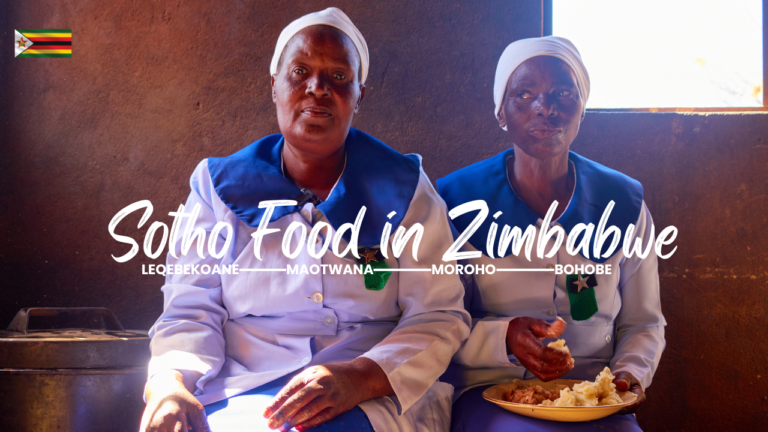The diversity of BaKalanga is mirrored in their food, which includes the use of affordable, basic, locally accessible products as well as a broad range of cooking techniques and preparation styles. Kalanga Food’s tastes and flavors evoke the nation itself, as well as showing fascinating similarities to Nambya and Karanga Food. In this documentary, we learned the origins of many BaKalanga people’s favorite dishes, which are united by a disarming honesty and ease of preparation, and we discovered that each fascinating flavor and intriguing new texture comes subtly through the taste of the whole, from the most interesting way of preparing Gwisa (pearl millet) to Tjihwabha (biltong) designed to extinguish the fire!
With a large supply of the mopane tree in Bulilima-Mangwe, and with it, there’s sure to be mahonja – amacimbi/madora/masonja that’s still made exactly as it was more than one thousand years ago. Given such a history, there’s no doubt that Kalanga food could hardly fail to offer an exciting culinary range. Quick and easy to make, bususu is the porridge form among the BaKalanga and is mostly prepared using two staple grains; Zwidlo (Sorghum) and Tjimanga (Maize). The versatile Matogwe, Matamba, Makomo and Mpfula are important fruits within the Kalanga cuisine. With its large availability in the study area, these trees provides a supply of both nutritional and medicinal benefits. Vitamin-rich maize, millet, and sorghum, which are washed, diced, steamed, or boiled, are perhaps the three most abundant grains among the BaKalanga and are generally consumed as a side dish to a meat stew.
Given the sheer size of Bulilima-Mangwe, Tsholotsho, North/North-West Botswana and Matopo Districts, the current vogue for Kalanga food means that no dish can ever be generic. Just as Plumtree Town is often an enigma to the traveler (traveling to Botswana or South Africa), so it’s cuisine- paradoxically, perhaps – is deceptively simple, and some of the origins and preparation methods have remained unchanged for more than a thousand years since the arrival of the BaKalanga in Zimbabwe.
Taboka!











